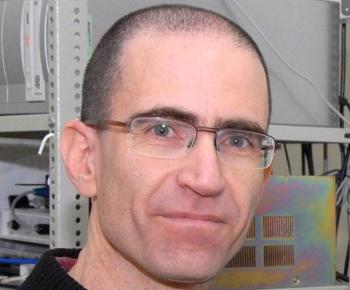| | 04 December, 2011
| | New research distinguishes roles of conscious and sub-conscious awareness in information processing | |
 | | Prof. Leon Deouell |
|
What distinguishes information processing with conscious awareness from processing occurring without awareness? And, is there any role for conscious awareness in information processing, or is it just a byproduct, like the steam from the chimney of a train engine, which is significant, but has no functional role?
These questions - which have long puzzled psychologists, philosophers, and neurobiologists - were recently addressed in a study by Hebrew University of Jerusalem researchers and published by the journal Psychological Science.
The study was headed by Prof. Leon Deouell from the Hebrew University’s Edmond and Lily Safra Center for Brain Sciences (ELSC) and Department of Psychology and Prof. Dominique Lamy from the Department of Psychology at Tel Aviv University, and conducted by research student Liad Mudirk of Tel Aviv University with collaboration of research student Assaf Breska from the Hebrew University.
We are not consciously aware of most of the input that hits upon our sensory systems. Yet subjectively, conscious awareness dominates our mental activity. “One of the dominant theories in cognitive sciences and psychology posits that parts of the information perceived without awareness may be processed to a certain extent,” says Prof. Deouell. “Yet to bind the different parts of a complex input into something meaningful and coherent requires conscious awareness.
To test this theory, the research team ran a study in which they presented participants with pictures of natural scenes including some human action, like a picture of basketball players jumping to reach a ball.
In other tests, the same scenes were presented -- except that the central object was replaced by another, unlikely object. For example, the basketball was replaced by a watermelon.
The participants viewed the pictures through a mirror stereoscope, a simple device that allowed the research team to present the pictures to only one eye. At the same time, the other eye viewed rapidly flickering patterns of colors which drew the subjects' attention, so that the participants were not aware for many seconds that anything was presented to their other eye. This allowed the researchers to measure how long it takes normal and unusual scenes to “win the competition” against the flickering pattern and break into awareness.
''We found that participants became aware of the unusual scenes earlier than to the usual scenes,'' commented Deouell. ''The conclusion was that even before the participants were aware of the existence of the picture, the semantic relationships between parts of the scene were interpreted.''
The study shows that, counter to previous theories, integration is not the prerogative of conscious awareness but is achieved even without awareness. When and why then do we need conscious awareness?
The findings of this research suggest that when the results of the integration between parts of the input are incompatible with expectations or prior knowledge, awareness is required in order to account for the conundrum. Thus, the study expands the realm of unaware processes, yet shows that conscious awareness is not a meaningful luxury - it allows us to deal with novel and unexpected situations.
|
|


